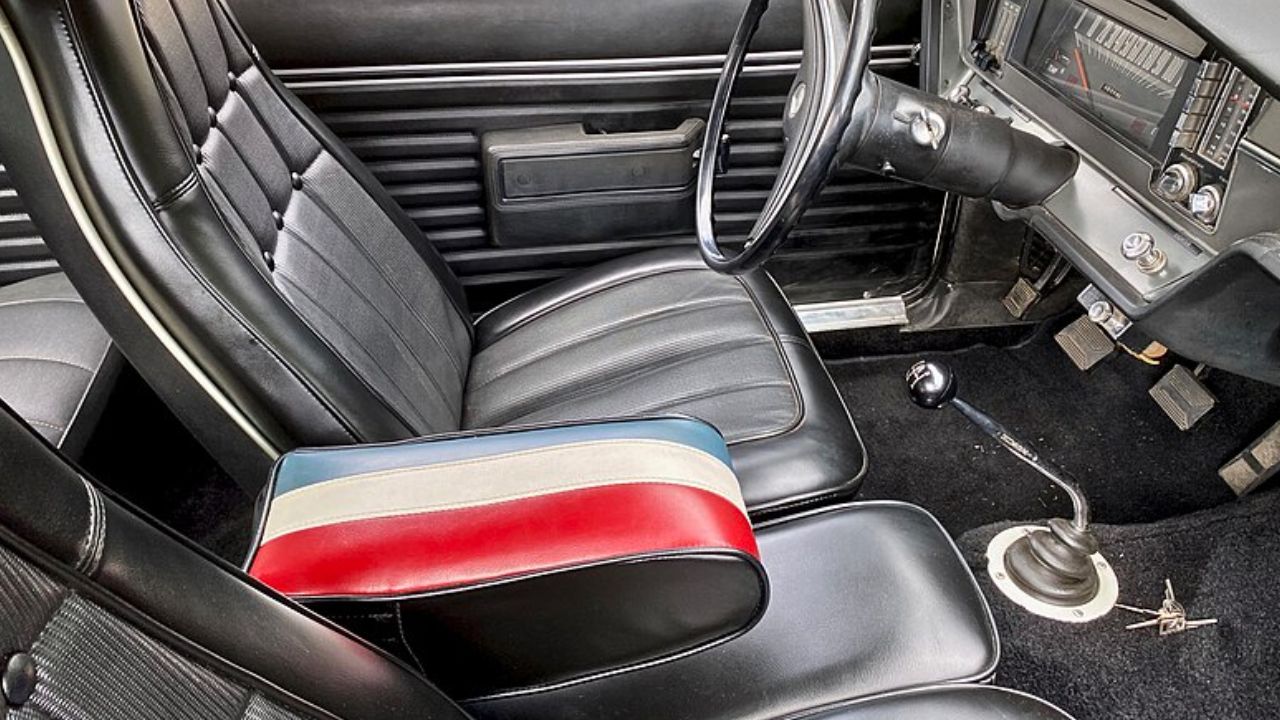Winterizing a classic car is crucial to ensure its longevity and performance during the cold months. Unlike modern vehicles, classic cars require special attention to prevent damage from freezing temperatures and moisture. Here, you’ll find the essential steps to protect your vintage automobile and have it ready for the road when spring arrives.
Preparing the Engine and Fluids
One of the most important steps in winterizing your classic car is to check and replace the oil. Cars like the 1967 Ford Mustang benefit from using winter-grade oil, as it flows more easily in cold temperatures and provides better lubrication. This is particularly vital for older engines that may have looser tolerances than modern engines. Make sure to consult your vehicle’s manual or a classic car expert to choose the right oil viscosity for winter conditions.
Next, turning our attention to the coolant system is vital. Ensuring that your car is filled with the appropriate antifreeze mixture will prevent freezing and corrosion. Imagine a classic 1959 Chevrolet Impala; such a car might have a more straightforward cooling system than newer models, but it still requires careful maintenance. It’s advisable to flush the coolant system and refill it with a 50/50 mix of antifreeze and distilled water. This mixture not only prevents freezing but also inhibits rust and scale buildup.
Fuel system maintenance is another critical aspect. Adding a fuel stabilizer to your tank can prevent fuel degradation and varnish buildup in the fuel lines and carburetor. This is particularly important for carbureted cars, such as a 1970 Dodge Challenger. These vehicles are more susceptible to issues caused by stale fuel, which can clog jets and lead to poor performance when you’re ready to hit the road again.
Protecting the Exterior and Interior
When it comes to protecting the exterior of your classic car, washing and waxing are non-negotiable. Take a model like the 1965 Jaguar E-Type; its iconic curves and paint job deserve protection from moisture and salt damage. Begin by thoroughly washing the vehicle to remove any dirt, grime, or road salt. After the car is clean, applying a high-quality wax will provide a layer of protection against the elements. Wax acts as a barrier, repelling water and preventing rust.
Covering your vehicle is another crucial step. Even when stored indoors, a breathable, weather-resistant car cover can shield your car from dust, moisture, and temperature fluctuations. For instance, a car like the 1973 Porsche 911 benefits from a tailored cover that fits snugly, ensuring that no part of the vehicle is exposed to potential damage. Make sure the cover is breathable to prevent moisture buildup underneath, which could lead to mold.
Interior care is often overlooked, but it’s just as important. Vacuum and clean the interior thoroughly, paying attention to areas where dirt and moisture tend to accumulate. For cars with leather interiors, like a 1964 Cadillac DeVille, applying a quality leather conditioner can prevent the seats from drying out and cracking. Additionally, using moisture absorbers or dehumidifiers inside the car can help prevent mold and mildew, ensuring the cabin remains fresh and inviting.

Battery and Electrical System Care
Maintaining the battery and electrical system is essential for ensuring your classic car is ready to start up when warmer weather arrives. For example, a 1966 Pontiac GTO requires special attention to its battery. Removing the battery and storing it in a warm, dry place can prevent it from freezing and losing charge. This simple step can save you from the inconvenience of a dead battery when you’re eager to drive your classic in the spring.
Before you store the battery, check all electrical components. Inspect connections for corrosion, and clean them if necessary. Ensure all electrical systems are in good working order, from headlights to the car’s radio. Cars like the 1968 Volkswagen Beetle, with their simpler electrical systems, can still suffer from issues if not properly maintained. Cleaning and inspecting these components can prevent headaches later.
If you prefer to leave the battery in the car, using a battery maintainer can keep it charged without overloading. These devices are designed to maintain a charge, ensuring that the battery remains healthy over long periods of inactivity. For instance, a 1972 Alfa Romeo Spider can be left with a battery maintainer connected, reducing the risk of a flat battery and extending its overall lifespan.
Tire and Suspension Considerations
Tire care is another crucial aspect of winterizing your classic car. For a vehicle like the 1970 Chevrolet Chevelle, checking tire pressure and inflating to the recommended levels can prevent flat spots during long periods of inactivity. Tires lose air over time, especially in colder temperatures, so maintaining the correct pressure is essential to avoid damage.
Elevating the car is a step that can significantly benefit your classic vehicle’s tires and suspension. Using jack stands to slightly lift a car like the 1971 Mercedes-Benz 280 SL off the ground reduces stress on the tires and suspension components. This practice can help prevent flat spots and relieve pressure on the suspension system, ensuring that both remain in good condition.
Inspecting suspension components is also a wise move. Examine shocks, springs, and bushings for wear, and replace any damaged parts. This is particularly important for cars like the 1963 Corvette Sting Ray, which rely on a well-maintained suspension system for their renowned handling characteristics. By addressing any issues before the car is stored, you can ensure a smooth ride post-winter.
Storage Environment Optimization
Choosing the right storage environment can make all the difference when it comes to preserving your classic car through the winter months. Ideally, a dry, temperature-controlled garage is the best option. For instance, a 1957 Chevrolet Bel Air will fare much better in a garage that maintains a stable temperature and humidity level, minimizing exposure to harsh winter conditions.
Pest prevention is another critical consideration. Rodents and other pests can wreak havoc on a car’s interior and wiring. To protect a vehicle like the 1975 BMW 2002, use traps or deterrents to keep these unwanted guests at bay. Regularly check the storage space to ensure no signs of rodent activity, and take action if you notice any droppings or chew marks.
Finally, make it a point to visit the storage site periodically. Regular inspections allow you to check for any signs of moisture, pests, or other potential issues. This proactive approach ensures that when spring arrives, your classic car, like the 1969 Dodge Charger, is in top condition and ready to hit the road. By taking these steps, you can enjoy peace of mind knowing your cherished vehicle is well-protected throughout the winter.
Like Fast Lane Only’s content? Be sure to follow us.
Here’s more from us:
*Created with AI assistance and editor review.







Leave a Reply